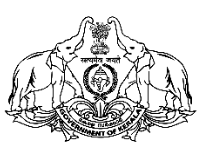The Department of Land Revenue under Government of Kerala is headed by the Commissioner for Land Revenue who is assisted by a Joint Commissioner and Assistant Commissioners. The Department comprises 14 District Collectorates, 27 Revenue Divisions, 78 Taluks and 1666 villages (including Group Villages). The District is headed by the District Collector, who is also the District Magistrate, assisted by Deputy Collectors. Each revenue division is headed by a Revenue Divisional Officer or Sub Collector who is also the Sub Divisional Magistrate and is assisted by a Senior Superintendent. Each Taluk is headed by a Tahsildar who looks into the administrative matters and executive magisterial functions within the Taluk. All matters related to land falls under the jurisdiction of the L R Tahsildar in the Taluk. Both the Tahsildars are assisted by Deputy Tahsildars. Each Village is headed by a Village Officer who is assisted by a Special Village Officer, Village Assistants and Village Field Assistants. Taluk Land Boards have been constituted and four Zonal Officers chair the Taluk Land Boards in their jurisdictiont as per the Kerala Land Reforms Act, 1963. The Land Tribunals headed by an officer in the rank of Tahsildar have been constituted under the aforesaid Act for the issue of land titles to tenants after verification of claims. The administrative functions of these bodies are supervised by the Land Board, with Secretary, Land Board as the administrative head.
Apart from these offices, about 115 special offices have been constituted to perform the functions of land acquisition by the state for bonafide public purposes.
Land Acquisition process in India was regulated by Land Acquisition Act, 1894, a law enacted during British rule. While the 1894 Act provided compensation to land owners, it neither provided for rehabilitation and resettlement (R&R) to displaced families nor took the social impact of the acquisition into consideration before proceeding to acquire land.
The Government of India felt that 'an Act to ensure humane, participative, informed and transparent process for land acquisition with the least disturbance to the owners of the land and other affected families and provide just and fair compensation to the affected families whose land has been acquired or proposed to be acquired or are affected by such acquisition and make adequate provisions for such affected persons for their rehabilitation and resettlement and for ensuring that the cumulative outcome of compulsory acquisition should be that affected persons become partners in development leading to an improvement in their post–acquisition social and economic status and for matters connected therewith or incidental thereto, needed to be enacted' .
Hence, The Right to Fair Compensation and Transparency in Land Acquisition, Rehabilitation and Resettlement Act, 2013 was enacted on 27th September 2013.
Land Acquisition Management System (LAMS)
The objective of the Land Acquisition Management System in the state of Kerala for all cases of land acquisitions is to streamline and improve the efficiency of the land acquisition process.
- To improve efficiency: Land acquisition software streamlines and automates many tasks, reducing paperwork and manual processes, which leads to faster and more efficient land acquisition procedures
- To increase transparency: To provide transparency in the land acquisition process by making information about land acquisition projects, compensation, and affected parties easily accessible to the public and relevant stakeholders
- Data Management: To maintain a centralised and organised repository of all information related to land acquisition, including land records, compensation details, and legal documents, making it easier to manage and retrieve relevant data when needed
- Communication: This includes enabling online communication, notifications, and updates
- GIS Integration: Geographic Information System (GIS) integration helps in better site selection, planning, and assessing the environmental and social impact of land acquisitions, leading to more informed decisions
- Project Monitoring: To provide tools for monitoring the progress of land acquisition projects, ensuring that they are on schedule and within budget
- To provide data to aid in timely update of village records (post award action)



